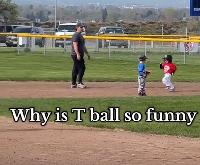Dying To Breathe- Comment
Category : News & Blogs
Views : 683
Post date : 2016-12-18 17:07
Information about this video
“That we met is fate. That I got this disease...is our destiny.” - He Quangui (1973 – 2015) to his wife Mi Shixiu, b. 1977
***********
A COFFIN sat in a corner of He Quangui’s spartan earthern house, shrouded and collecting a coat of dust. But, day and night, his fits of violent coughing and laboured breathing reminded the former gold miner that it was there waiting for him.
It has been 10 years since Mr He was diagnosed with silicosis, a form of “black lung” disease or pneumoconiosis, China’s most prevalent occupational disease. An estimated 6 million Chinese workers are affected by this. They die slowly, wasting away as their lungs are gradually overwhelmed by the dust they breathed in years earlier when working in gold, coal or silver mines, or stone-cutting factories.
Mr He is typical among the growing number of Chinese workers dying from the disease: barely out of his 30s, a sole breadwinner and a migrant worker from impoverished, remote mountainous areas. Despite their labors, most are still poor and unable to get treatment.
While not terminal, “black lung” is irreversible and starts to sicken workers up to ten to fifteen years after they first worked in mines. Those who, like Mr He, worked in gold mines, are known to fall ill within months of contact with the silica dust and die more quickly than other types of workers, making the disease most potent among gold miners. This is the unseen cost of extracting resources to fuel China’s economic boom and of mining gold in China - the world’s leading gold producer.
Pneumoconiosis is now quietly killing three times more miners in China than mining accidents, says Chinese state media. In the United States, Australia and the UK, the disease is making a comeback after 20 to 40 years of absence.
In China, for years, the problem was under better control because most mines were state-run and miners received regular check-ups and treatment. But over the past two decades, state companies have leased out thousands of mines to fly-by-night companies. Now, the effect of this is becoming apparent in the villages where thousands of men like Mr He lay waiting to die. They have limited access to good medical care and virtually no legal aid.
In Mr He’s village alone, 200 are dying. In the late 1990s, they began leaving for work in the gold mines. Many have now returned to die. In a notebook, Mr He kept a list of names of friends who had died.
“I’ve watched them go, one by one," Mr He told me during one of my stays in his farmhouse. "I know one day it will happen to me.” He outlived all doctors’ expectations, recovered from a suicide attempt and miraculously fought off severe tuberculosis one winter -- buoyed by the deep love he and his wife share. “I don’t want to leave my family,” Mr He told me repeatedly. He finally lost his battle on 1 August 2015.
***********
A COFFIN sat in a corner of He Quangui’s spartan earthern house, shrouded and collecting a coat of dust. But, day and night, his fits of violent coughing and laboured breathing reminded the former gold miner that it was there waiting for him.
It has been 10 years since Mr He was diagnosed with silicosis, a form of “black lung” disease or pneumoconiosis, China’s most prevalent occupational disease. An estimated 6 million Chinese workers are affected by this. They die slowly, wasting away as their lungs are gradually overwhelmed by the dust they breathed in years earlier when working in gold, coal or silver mines, or stone-cutting factories.
Mr He is typical among the growing number of Chinese workers dying from the disease: barely out of his 30s, a sole breadwinner and a migrant worker from impoverished, remote mountainous areas. Despite their labors, most are still poor and unable to get treatment.
While not terminal, “black lung” is irreversible and starts to sicken workers up to ten to fifteen years after they first worked in mines. Those who, like Mr He, worked in gold mines, are known to fall ill within months of contact with the silica dust and die more quickly than other types of workers, making the disease most potent among gold miners. This is the unseen cost of extracting resources to fuel China’s economic boom and of mining gold in China - the world’s leading gold producer.
Pneumoconiosis is now quietly killing three times more miners in China than mining accidents, says Chinese state media. In the United States, Australia and the UK, the disease is making a comeback after 20 to 40 years of absence.
In China, for years, the problem was under better control because most mines were state-run and miners received regular check-ups and treatment. But over the past two decades, state companies have leased out thousands of mines to fly-by-night companies. Now, the effect of this is becoming apparent in the villages where thousands of men like Mr He lay waiting to die. They have limited access to good medical care and virtually no legal aid.
In Mr He’s village alone, 200 are dying. In the late 1990s, they began leaving for work in the gold mines. Many have now returned to die. In a notebook, Mr He kept a list of names of friends who had died.
“I’ve watched them go, one by one," Mr He told me during one of my stays in his farmhouse. "I know one day it will happen to me.” He outlived all doctors’ expectations, recovered from a suicide attempt and miraculously fought off severe tuberculosis one winter -- buoyed by the deep love he and his wife share. “I don’t want to leave my family,” Mr He told me repeatedly. He finally lost his battle on 1 August 2015.
Other Videos Posted by peter88
Other Videos in News & Blogs Category
New Comment



























